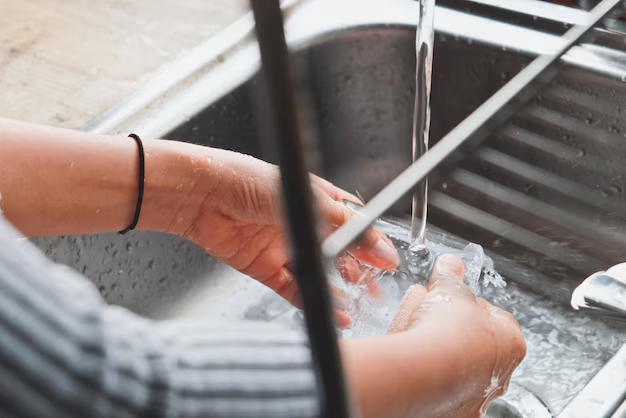Effortless Water Hose Connection: A Step-by-Step Guide to Linking Your Refrigerator
Setting up a refrigerator with a water dispenser or ice maker involves a crucial step: connecting the water supply line. While it may seem daunting, breaking the process down into manageable steps makes it much simpler. Whether you’re updating your kitchen or simply enjoying modern conveniences, mastering this skill is easier than you might think.
Understanding Your Refrigerator's Water Supply Needs
Before diving into the specifics of connecting a water hose to your refrigerator, it's helpful to understand why this connection is essential. Many modern refrigerators come equipped with ice makers and water dispensers, conveniences that require a steady water supply to function optimally. Ensuring a secure and leak-free connection is critical not only for performance but also to avoid potential water damage.
Why is a Secure Connection Important?
- Performance: A stable water supply ensures efficient ice production and consistent water flow from your dispenser.
- Safety: Proper installation prevents leaks, reducing the risk of mold, mildew, and water damage.
- Maintenance: Eliminating leaks minimizes maintenance issues and extends the lifespan of your appliance.
Tools and Materials You'll Need
Here's a brief checklist of tools and materials you should gather before beginning:
- Water hose or copper tubing: Available in various lengths based on your setup needs.
- Teflon tape: Ensures a tight seal at connection points.
- Adjustable wrench or pliers: For tightening connections securely.
- Drill and bits: Only necessary if you need to create a new water line access point.
- Water shut-off valve: Typically part of your kitchen plumbing, allowing control over the water supply to the refrigerator.
- Bucket or towels: Helps manage any potential water spills during the process.
Step-By-Step Instructions to Connect a Water Hose to a Refrigerator
The following guide provides a clear, practical pathway to connecting your refrigerator’s water supply. Let's get started.
Step 1: Locate the Water Supply Line
Identify the nearest water source to your refrigerator, typically under the kitchen sink. Look for the cold water line and the associated shut-off valve. Ensure that you have clear access to this area before you begin.
Step 2: Prepare Your Water Hose
Measure the distance from the water source to the connection point on the refrigerator to determine the length of the hose or tubing needed. It’s a good idea to allow a little extra length to move the fridge without straining the line.
Step 3: Turn Off the Water Supply
Before making any connections, turn off the water supply using the shut-off valve. This step is crucial to avoid water spills and pressure issues during installation.
Step 4: Attach the Hose to the Water Supply
Connect the Hose to the Valve:
- Wrap Teflon tape around the threads of the shut-off valve to ensure a tight seal.
- Attach the water hose to the valve, tightening it with an adjustable wrench or pliers until secure.
Check for a Leak-Free Seal:
- Slowly turn the valve back on and observe any leaks. If you see drips, tighten the connection further.
Step 5: Connect the Hose to the Refrigerator
Locate the Refrigerator’s Water Inlet:
- Typically found on the back of the refrigerator, this inlet may have a cap covering it for protection.
Attach the Hose to the Inlet:
- Remove the protective cap from the inlet (if present).
- Apply Teflon tape to the inlet threads.
- Attach the other end of your water hose, securing it with a wrench.
Step 6: Secure Connections and Test
Ensure All Connections are Tight:
- Review all connection points between your hose and both the water supply and refrigerator, ensuring they’re tight and secure.
Test for Leaks:
- Turn the refrigerator's water valve on and monitor all connections for leaks over the first few hours of operation to ensure a reliable seal.
Dispense Water:
- If your refrigerator model has a dispenser, let several cups of water flow through the system to clear air pockets and impurities.
Related Considerations and Tips
While connecting a water hose is straightforward, other considerations can enhance the process and maintenance of your refrigerator.
Regular Maintenance
Inspect Regularly:
- Every few months, check your connections for signs of wear or leakage.
- Clear any debris or buildup that could affect water quality.
Replace Filters:
- Follow the manufacturer’s instructions for changing water filters, generally required every six months.
Common Troubleshooting Tips
Low Water Pressure:
- Check if the water supply valve is fully open and that there are no kinks in the hose.
Water Not Flowing:
- Ensure the refrigerator is turned on and that the hose connects correctly.
No Ice Production:
- Confirm that the ice maker is switched on and the water line is not frozen.
Additional Resources: Water Efficiency and Safety
Investing in water-efficient appliances can contribute to environmental conservation. Many modern refrigeration systems are designed with eco-friendly technology, reducing water usage without compromising performance. Additionally, maintaining a safe distance between electrical outlets and water hoses ensures safety and appliance longevity.
Essential Steps for Success: Quick Reference Summary
Here's a handy checklist to remember for a successful water hose connection:
- ✏️ Plan Your Path: Measure distance and gather necessary tools.
- 🔎 Locate Source: Find the best water supply source nearby.
- 🚰 Turn Off Water: Always shut off before starting.
- 🔧 Secure Connection: Use Teflon tape and tools for a tight seal.
- 🤔 Check & Test: Confirm flow and check for leaks.
Embarking on this project can be rewarding, offering a blend of convenience and functionality to your kitchen setup. If ever uncertain, professional assistance remains a reliable, stress-free option. Enjoy the modern conveniences that a properly installed water supply can bring to your culinary lifestyle!
